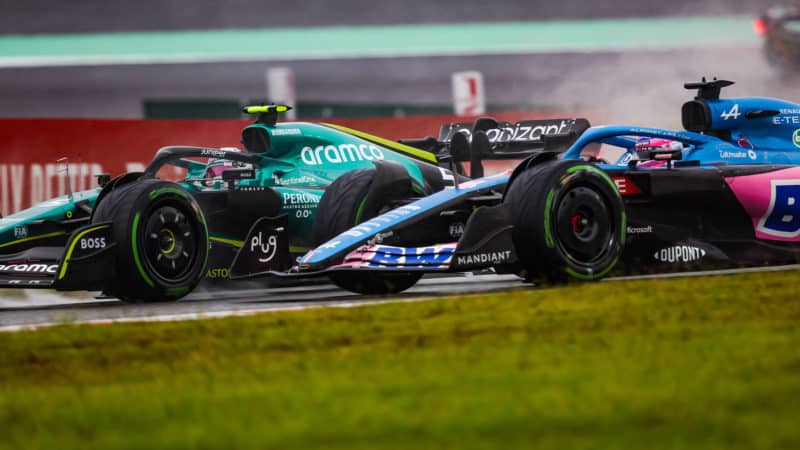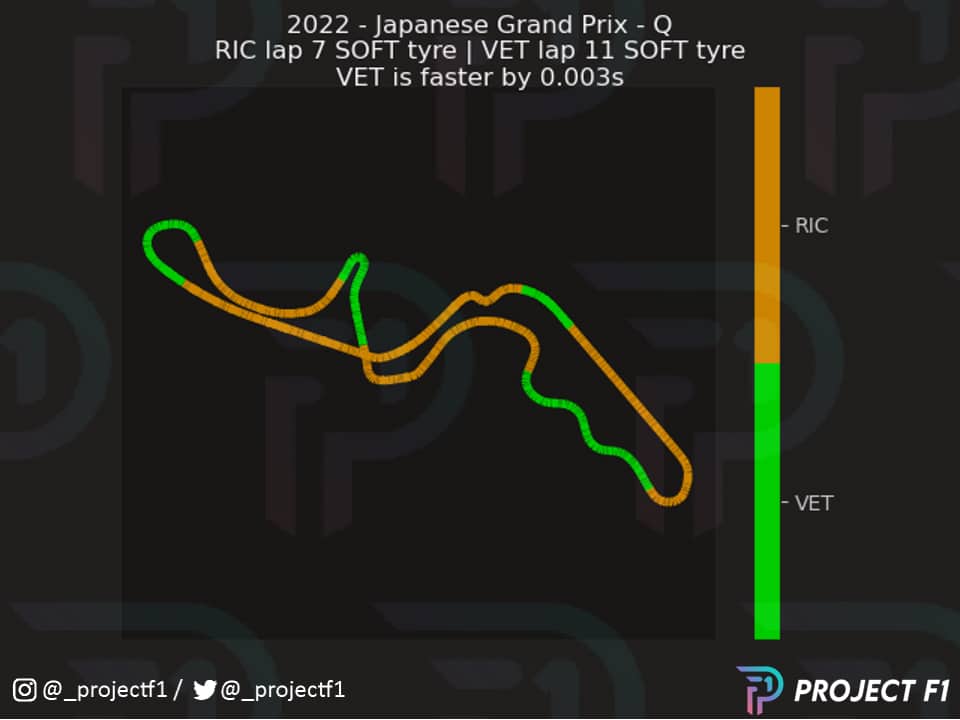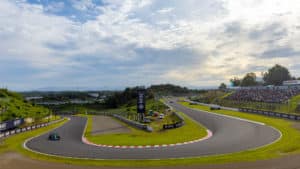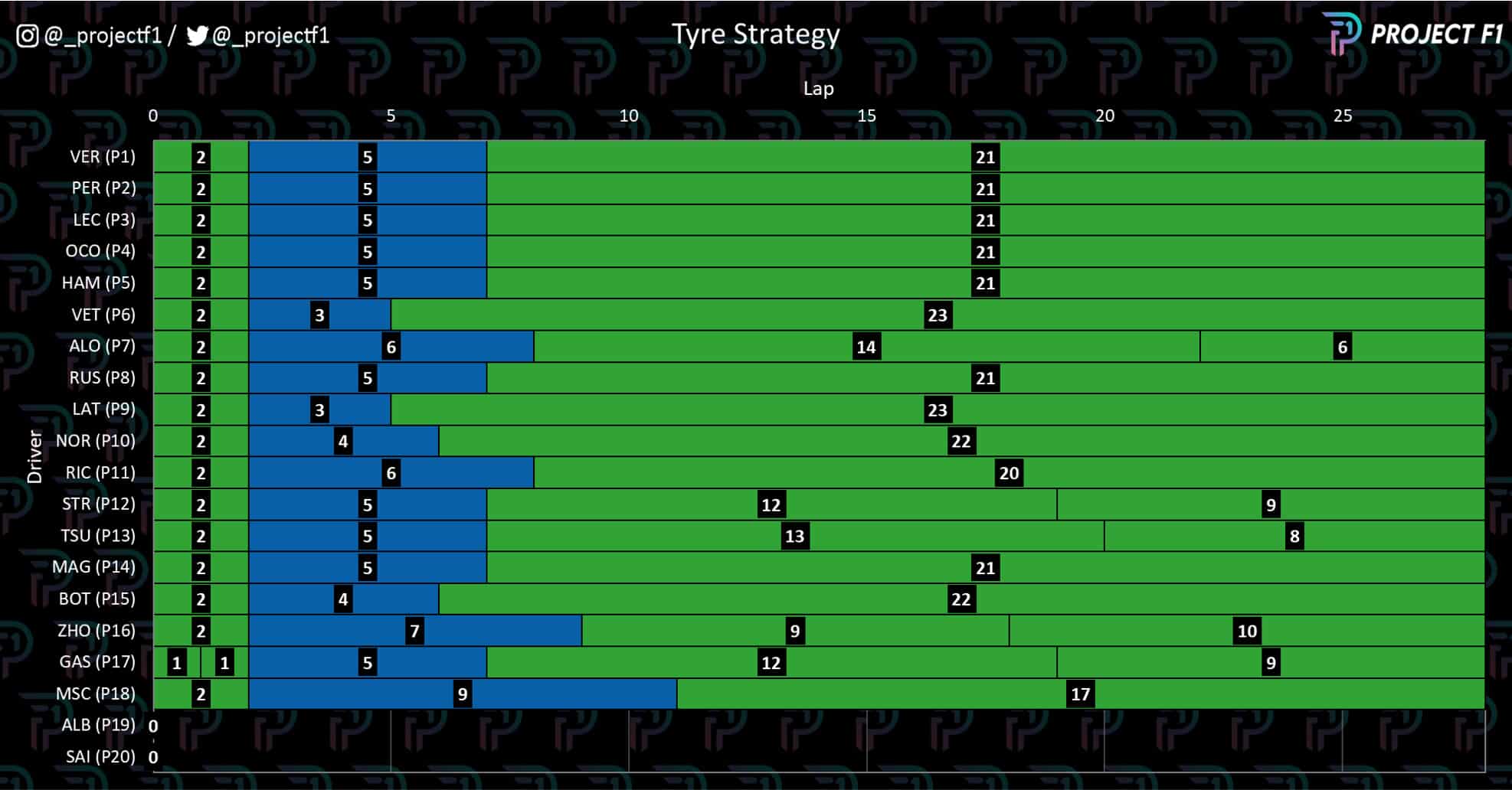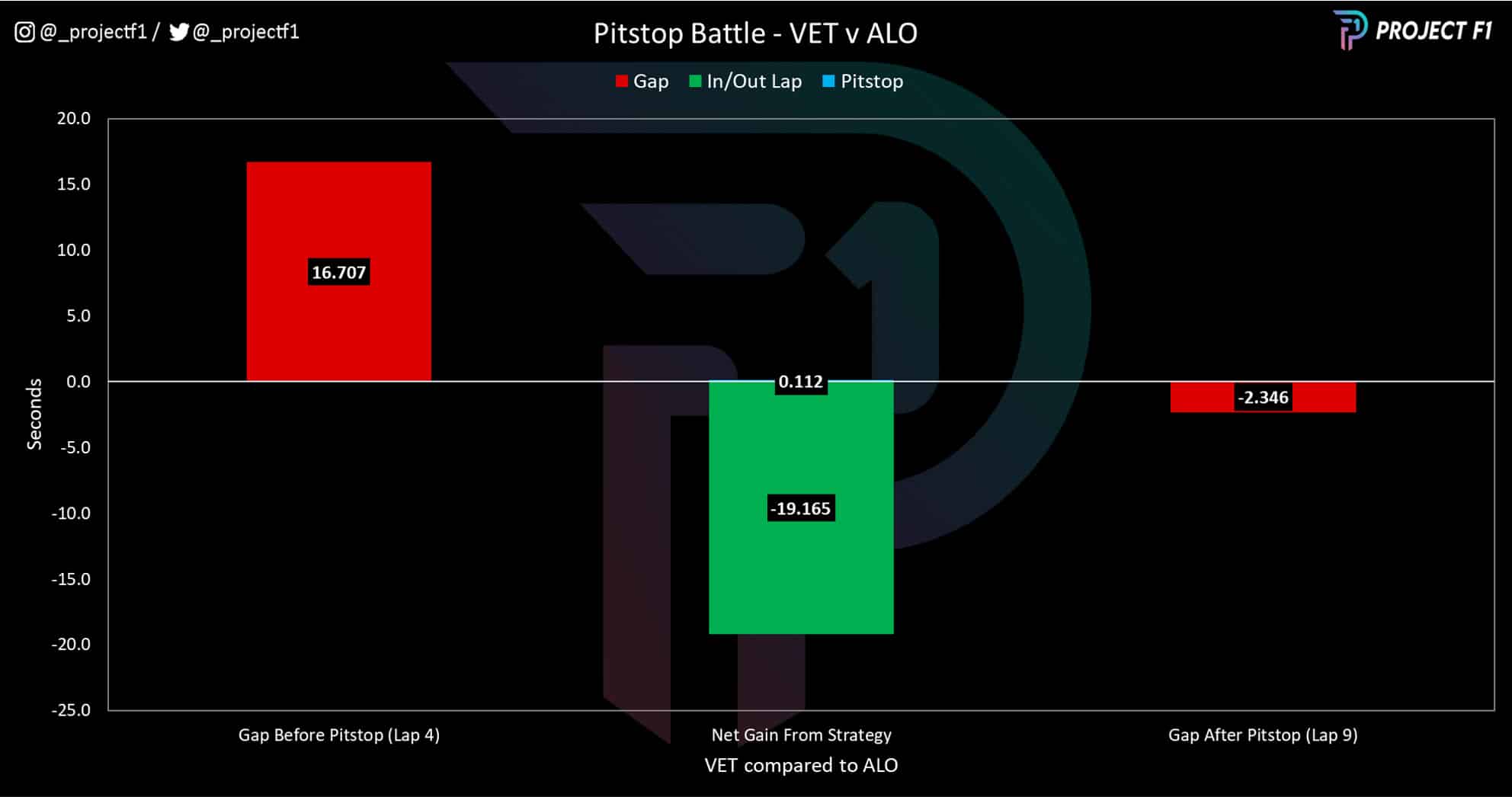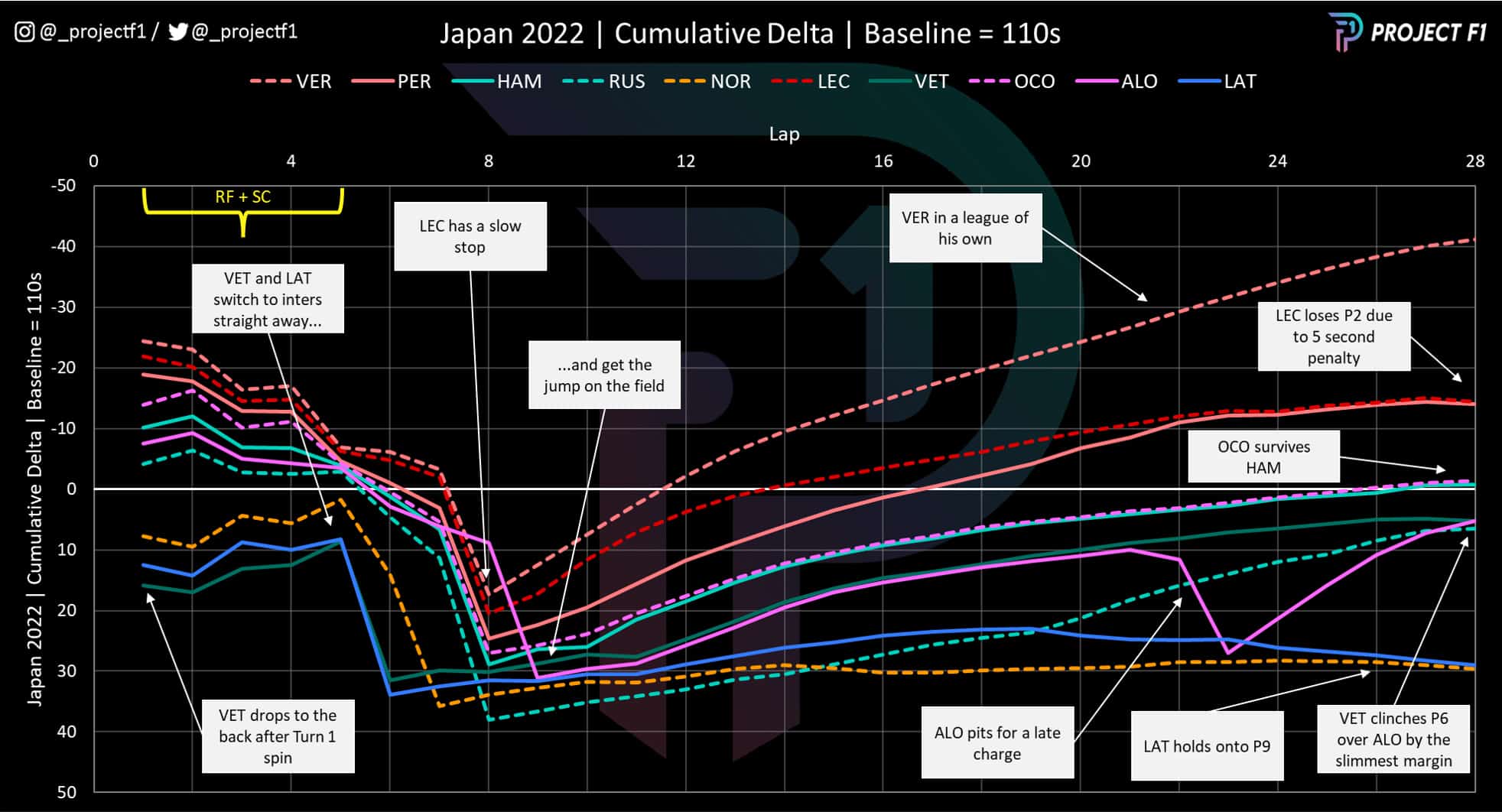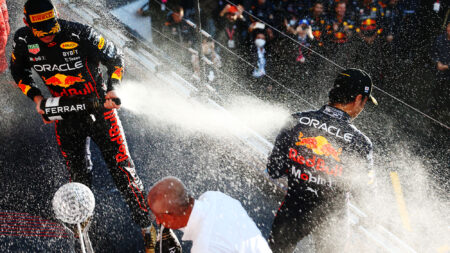Instead of waiting in the hope that Vettel’s tyres would degrade and make him an easy garget, Alonso and Alpine elected to roll the dice of their own – and pit for a fresh set of intermediates – almost exactly in line with the advice of pundit, ex-champion, and renowned changeable weather specialist Jenson Button.
The solid pink line drops and then the extra pace of the fresh tyres is evident, as Alonso’s average lap time swiftly rises, on collision course with Vettel’s.
However, Alpine pitted around a lap later than Button’s recommendation; given the slim margin to Vettel at the end of the race, perhaps Alpine’s pitwall should have been dialled in to the commentary box.
Vettel’s tyre sorcery
Chart 6 Race pace compared
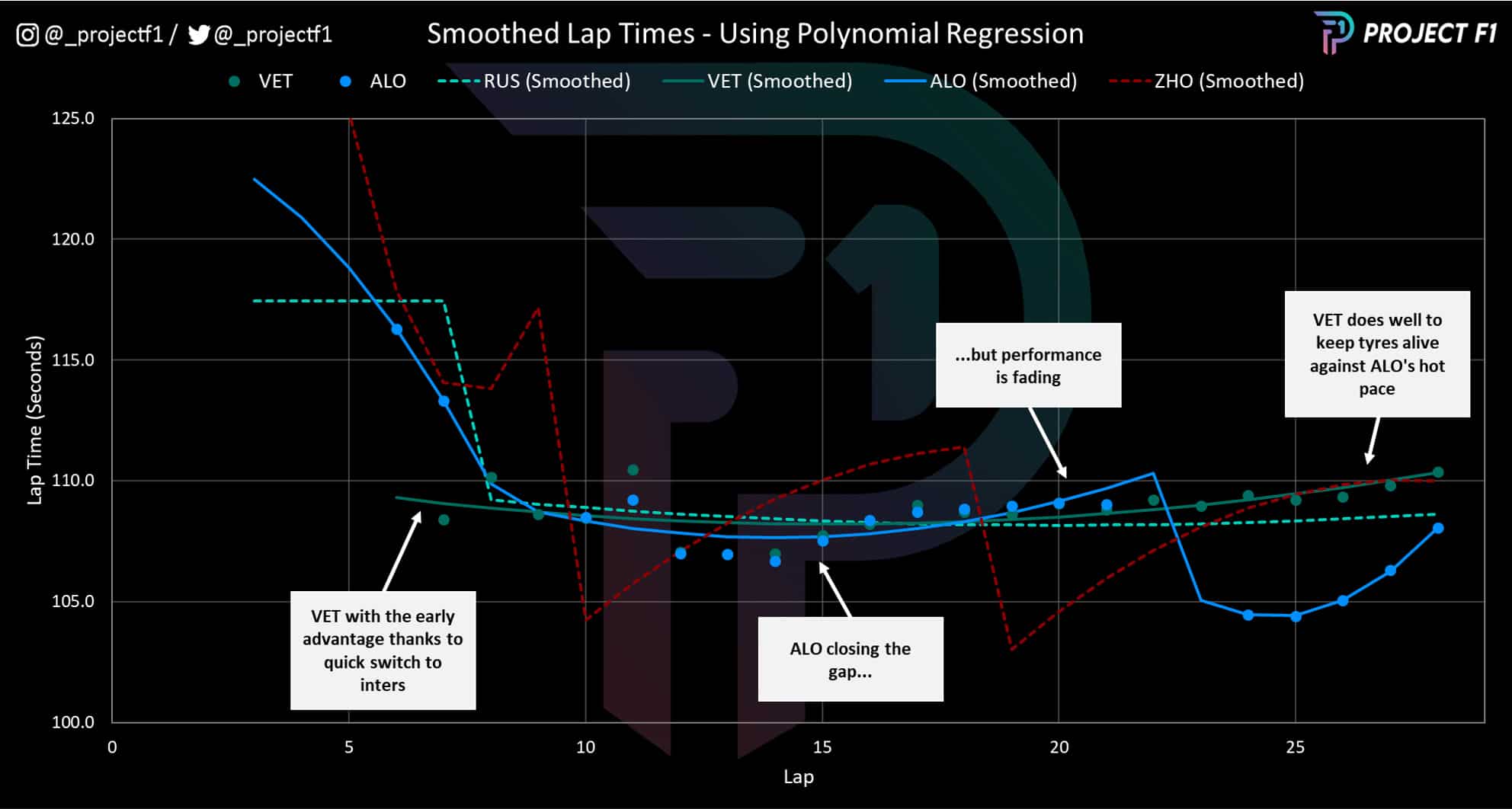
Fresh intermediate tyres proved a potent weapon, where the lap times have been smoothed to filter out anomalies.
Zhou was one of the first to make the change and realised the gains almost immediately: see how his laptime, shown by the dotted red line, plummets below 105sec as soon as he stops on lap 18. However it’s also clear that Zhou’s performance also degraded relatively quickly.
Perhaps Alpine was optimistic that Alonso could keep the new intermediates alive for longer. While this appeared to somewhat be the case, he still quickly suffered noticeable degradation.
The other crucial element to consider is the fact that Vettel was able to keep his initial intermediate tyres alive for the duration of the stint, without sacrificing meaningful performance. Vettel didn’t suffer the degradation profiles observed by either Zhou or Alonso.
This was a hallmark of Vettel’s drive to P6.
The last lap battle
Chart 7 Final lap telemetry – Alonso vs Vettel
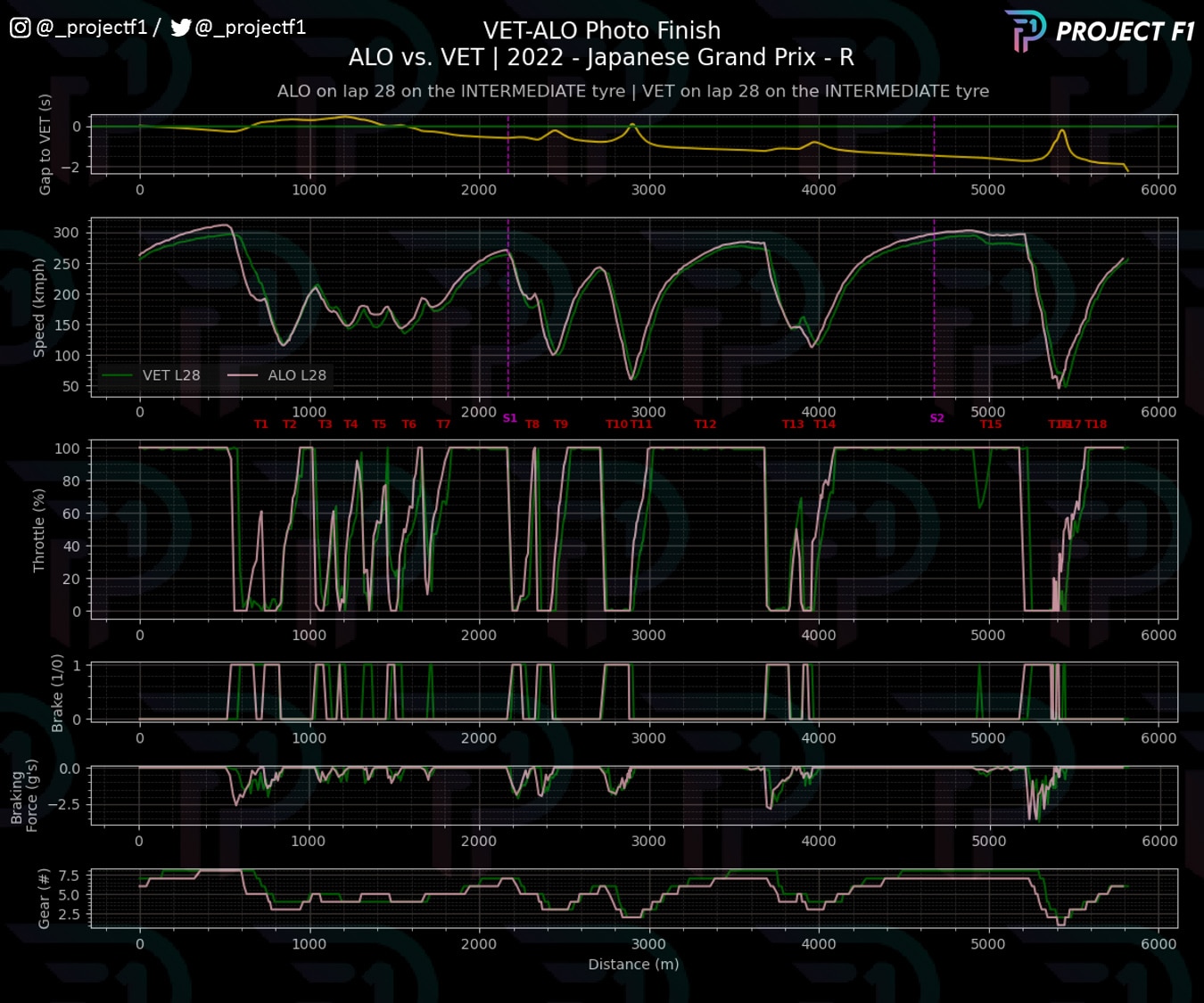
It was all building up to this: the final lap crescendo as Alonso leaned on his fresher tyres and muscled alongside Vettel. They ducked, dived, slithered and blasted towards the chequered flag still side-by-side.
As Button had suggested, one more lap could have made the difference; it was such a small difference to be had, with Alonso only losing out by eleven hundredths of a second.
The final lap telemetry above shows just how impressive Vettel’s feat was. Alonso is about 2 seconds faster than Vettel on the final lap and both the speed and throttle trace how he had superior grip when compared to the German.
Alonso was able to carry more speed through the corners, as well as getting on the throttle sooner and with more confidence. Alonso and the Alpine also had the straight-line speed advantage – also visible in the above telemetry.
After hours in the pouring rain, Suzuka's fans got to see two legends cross the line separated by just 0.011s on Sunday 🤯
🎥 x @Tomo__moto_ #JapaneseGP #F1 pic.twitter.com/nT5sbKf7ke
— Formula 1 (@F1) October 10, 2022
But despite all of this, despite how close Alonso got, Vettel had done enough in the final corner to get a good enough exit for the run down to the line.
Onboard footage of the battle shows that Alonso had run out of battery and was therefore unable use the overtake functionality of the electric motor for maximum power.
Be that as it may, Vettel had done enough to see himself over the line in the better position.
It was a spectacular performance that was easily deserving of the driver of the day award, and a fitting farewell to one of Vettel’s favourite tracks. A fantastic photo finish as well.
Project F1 turns data into graphics that uncover race pace and strategy
See more analysis at @_ProjectF1 on Twitter or @_ProjectF1 on Instagram
